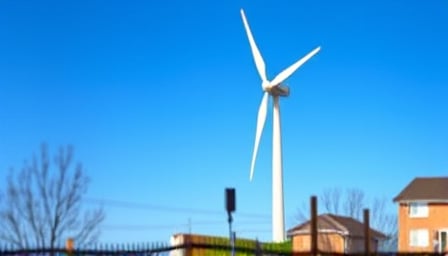Brookfield Renewable Corp: A Critical Examination
In the ever-evolving landscape of renewable energy, Brookfield Renewable Corp stands as a formidable player, yet recent financial metrics suggest a narrative that demands scrutiny. Operating across a diverse array of renewable power platforms, Brookfield Renewable Corp boasts an impressive portfolio that spans hydroelectric, wind, solar, and storage facilities across North America, South America, Europe, and Asia. With approximately 33,000 megawatts of installed capacity and a development pipeline of about 155,400 megawatts, the company’s reach is undeniable. However, beneath the surface of these impressive figures lies a financial conundrum that cannot be ignored.
Financial Metrics: A Red Flag
At the heart of the controversy is Brookfield Renewable’s price to earnings (P/E) ratio of -49.89. This negative figure is not just a statistical anomaly; it is a glaring red flag that suggests the company’s earnings may be undervalued—or worse, that the company is incurring losses. Such a metric raises critical questions about the company’s profitability and financial stability. Investors and analysts alike must delve deeper to understand the underlying causes of this negative P/E ratio. Is it a temporary setback, or does it indicate deeper structural issues within the company?
Valuation Concerns
Adding to the complexity is the company’s price to book (P/B) ratio of 8.68. While this ratio indicates a relatively low valuation compared to its book value, it also suggests that the market may be undervaluing Brookfield Renewable’s assets. This discrepancy between market perception and intrinsic value warrants a closer examination of the company’s asset management and strategic direction. Are the company’s assets being leveraged effectively to generate sustainable growth, or is there a disconnect between asset value and market performance?
A Diverse Portfolio with Hidden Risks
Brookfield Renewable’s business model is multifaceted, encompassing Renewable Power & Transition, Infrastructure, Private Equity, Real Estate, Credit, and Insurance Solutions. Its Renewable Power & Transition business operates across five continents, managing a diverse portfolio of hydro, wind, solar, distributed energy, and sustainable solutions. Meanwhile, its Infrastructure business owns and operates assets across transport, data, utilities, and midstream sectors. The Private Equity business spans business services, infrastructure services, and industrials, while the Real Estate business includes housing, logistics, hospitality, science and innovation, office, and retail sectors.
While this diversity is a strength, it also introduces a layer of complexity and potential risk. Each sector comes with its own set of challenges and market dynamics. The company’s ability to navigate these complexities and deliver consistent performance across all sectors is crucial. Investors must consider whether Brookfield Renewable’s diversified approach is a strategic advantage or a potential liability.
Conclusion: A Call for Vigilance
In conclusion, Brookfield Renewable Corp’s impressive portfolio and global reach are undeniable. However, the company’s financial metrics, particularly the negative P/E ratio and the relatively low P/B ratio, raise significant concerns. These figures suggest potential undervaluation and hidden risks that require careful examination. Investors and stakeholders must remain vigilant, scrutinizing the company’s financial health and strategic direction to ensure that Brookfield Renewable’s growth trajectory is sustainable and aligned with market expectations. Only through a thorough and critical analysis can the true value and potential of Brookfield Renewable Corp be accurately assessed.
